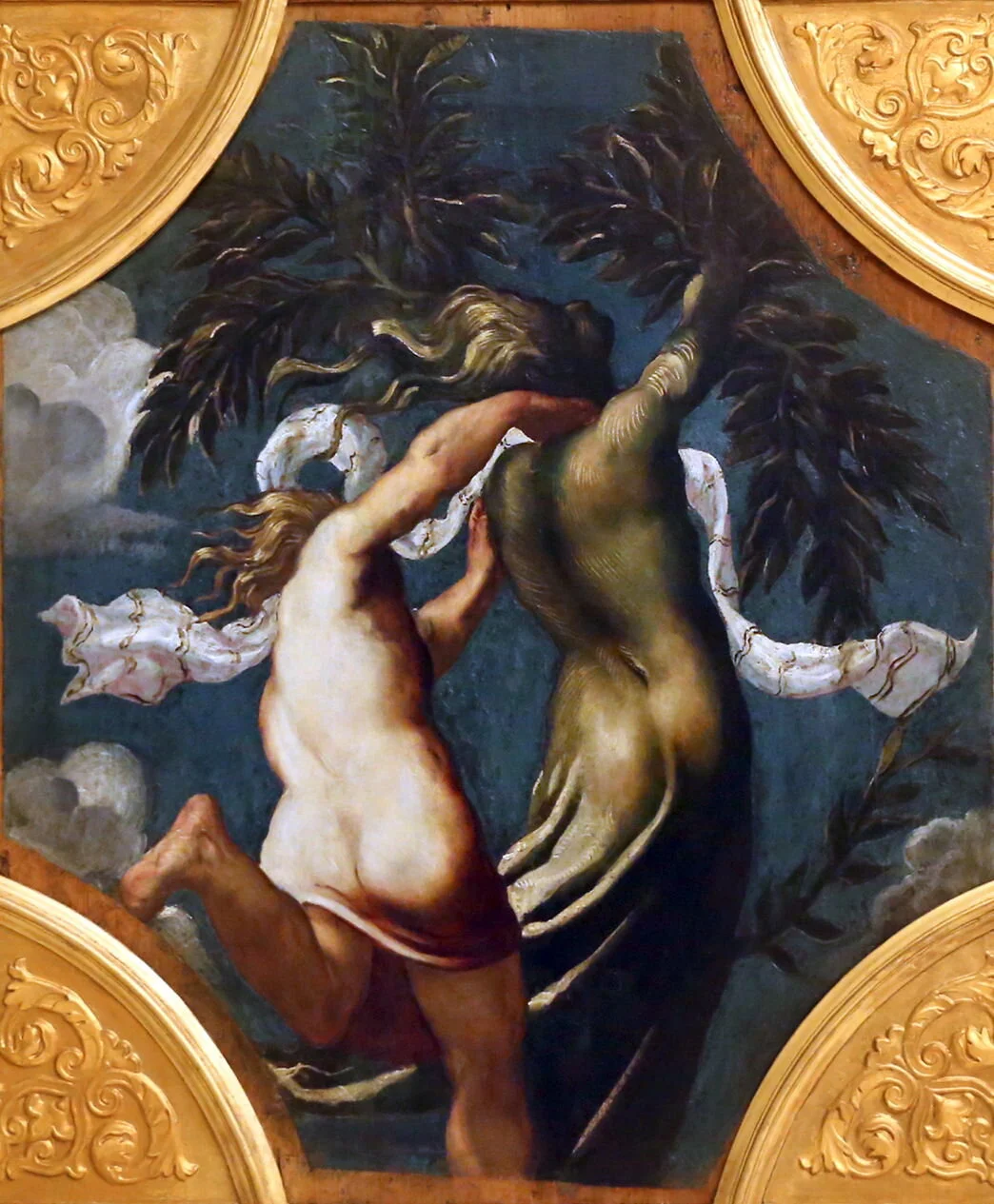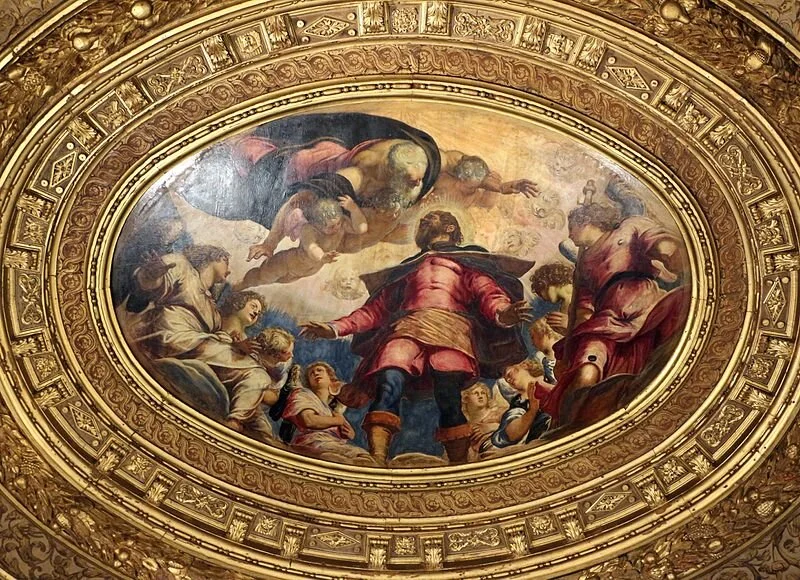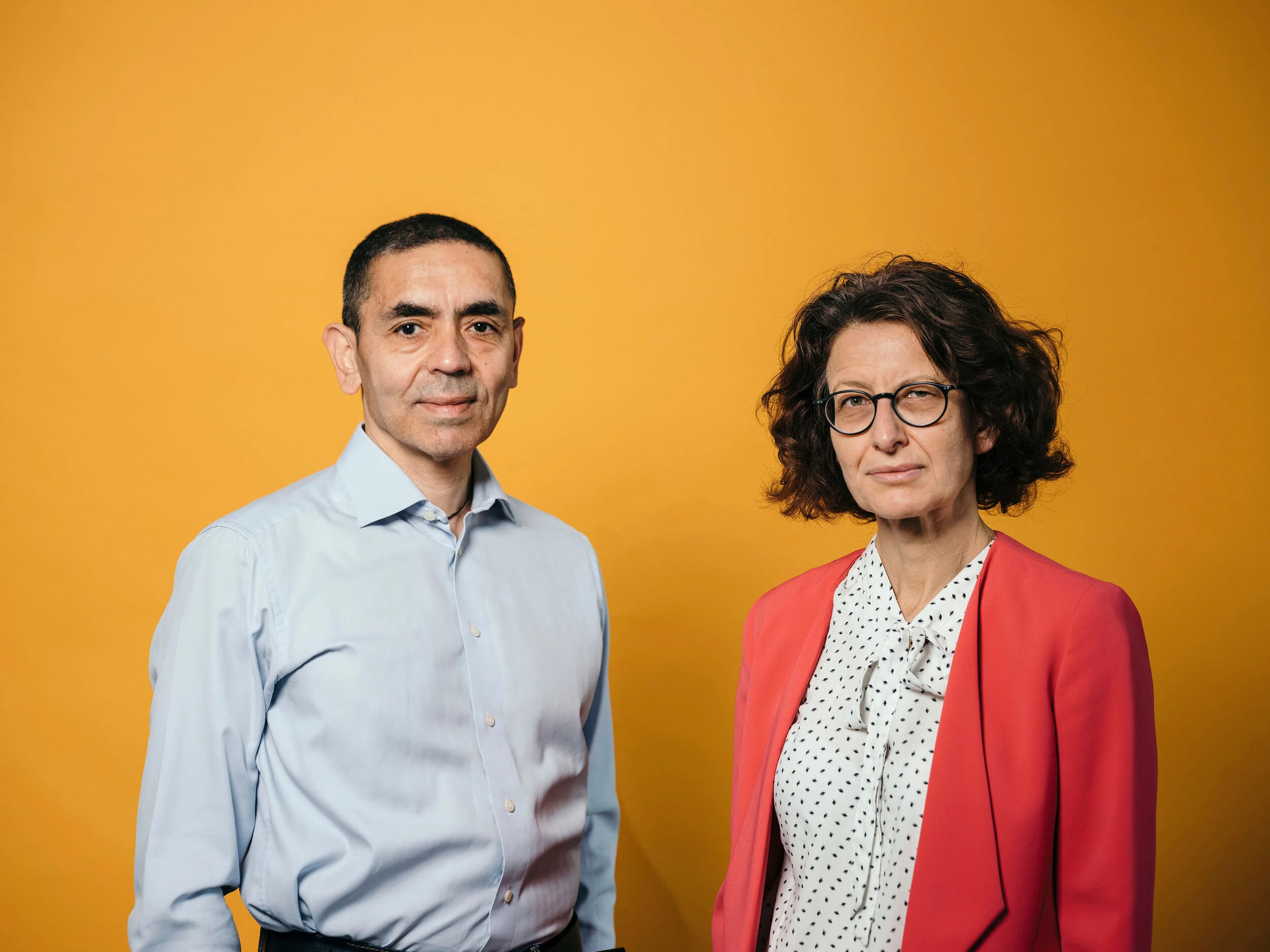THE GROOVE ISSUE 10 - TWO VALUABLE STORIES ON CREATIVITY, 500 YEARS APART
Welcome to the tenth issue of The Groove.
If you are new to The Groove, read our intro here. If you want to read past issues, you can do so here.
If somebody forwarded you this email, please subscribe here, to get The Groove in your inbox every Tuesday.
Find me here or on Instagram, Twitter, or Facebook.
Love,
Maria
TWO VALUABLE STORIES ON CREATIVITY, 500 YEARS APART
Jacopo Tintoretto, Self Portrait, oil on canvas, ca. 1546. This one is hanging at the Philadelphia Museum of Art
There are many reasons why I advocate for everyone to invest in the development of their creative powers. And by creative powers I don’t mean arts and crafts or artistic talent… so many people are confused about what creativity means. Creativity is the ability that every human being possesses to come up with original ideas of value. “Innovation” takes it a step forward and uses those ideas of value to materialize them into novel or improved solutions for clients, the marketplace, societies, the world. You don’t have to invent an app like Uber to be innovative - that’s a trap that tech people, management consulting companies, and the stock market have perpetuated to keep insulating the concept of innovation from the rest of us. It’s wrong to think that way. The application of creative thinking, whether you are an artist, an entrepreneur, or an employee in any business, requires the same skillset no matter what you do.
Creative Thinking Requires the Same Process in Art, Business, or Science
A recent study published a few weeks ago in the journal Thinking, Skills and Creativity, conducted by three university professors from Maastricht University in the Netherlands and University of South Australia, finally proves a point that I’ve been making for years in my consulting with companies and in my creativity classes online: creative processes are more or less the same across domains and disciplines. While it is true that CEOs, engineers, and artists create very different kinds of work with very different intentions and outcomes, the process they use to get there is very similar. David Cropley, who co-authored the study, said: “The new bit of finding is that those differences are actually pretty small and small enough that I would argue they don't really make a heck of a lot of difference.”
After having consulted for many companies, helping their executives think in different ways, as well as through teaching creativity classes to hundreds of businesspeople, entrepreneurs and also artists, I always hear people say at the beginning of my program: “I’m stuck! I’m not creative! The ideas stopped coming! Whatever innovative or original work I produced in the past was pure luck!” In other words, they suffer from “impostor’s syndrome” and think they will never be able to bring innovative solutions or create original and compelling work ever again. The truth is, most of the time, dozens of lucrative ideas are sitting right by their side, but they are unable to see them because they have been blinded by the impossibly-high fabricated standards of what being creative and innovative entails.
Creativity Requires Willingness and Action
We are the only species in the planet capable of creativity, of materializing our ideas into something else: a sculpture, a vaccine, a book, a car. And the truth is that the more we are invested, and the more we act to bring our best work forward, the more we will be able express our creative potential and to give that to others as well. The operative words are “invested” and “act” - if anybody is sitting down day-after-day waiting for the muse to come and release the fairy dust, that person may as well turn the lights off and go to sleep because the muse won’t visit.
Use What You Have to Do Something New
That desire to do something different and innovative is what pushed Venetian artist Jacopo Tintoretto to not lose his cool or doubt his creativity, when his most admired artist, Titian, fired him as an apprentice only ten days after having started in his studio ca. 1535. Titian, sensing that Tintoretto had better skills than him, feared for his own reputation as the best painter in Venice and refused to teach Tintoretto any of his hard-earned techniques. Titian thought: “if I don’t teach him, he won’t be able to dethrone me.” Tintoretto, who had no money and needed to hustle to be able to put food in his mouth, picked up his brushes and rather than try to present himself as a master like Titian or to capture only the attention of the aristocracy like his contemporaries, instead set up shop on top of the Rialto Bridge and told anyone who would pay attention that he was happy to take commissions big and small, paint their portraits, frescoes inside their houses and even their decaying façades. And what’s even better: he did this faster and for a fraction of the price than any other Venetian artist with similar skills.
Jacopo Tintoretto, Apollo and Daphne, oil on panel, c. 1541. Painting on top of the Rialto Bridge helped secure Tintoretto his first substantial commission for the young patrician, Vettore Pisani, who wanted to decorate a room in his palace at San Paternian, near San Marco in Venice. This is one of those commissioned panels, of which only fourteen have survived and are now in the Galleria Estense in Modena, Italy.
Fill the Needs of an Adjacent Market You Didn’t Consider Before
What Tintoretto developed was a technique called “Prestezza,” which was rougher than what other late Renaissance artists employed, and instead of many layers of thin paint, he went with a rough undercoat, drew a sketch with a light color on top of the base, and then painted inside the lines of his drawing using vibrant colors and free brushstrokes that were strong, thick, and spontaneous. Ten years later, Tintoretto was considered one of the most important Venetian painters, placing him close to Titian.
How did Tintoretto get there with no money or connections? Because he was willing to do the work and to experiment and change what his predecessors had done. He completed more than 650 commissions, which was more than twice what any of the other famous painters of the time had done. He served both the patricians and the commoners, who for the first time could afford excellent works of art without having to sell their children to pay for them. This prolific career is what allowed Tintoretto to gain notoriety in upper circles who noticed his talent and dexterity.
Get Bold Things Done
Tintoretto’s The Glorification of Saint Rocco, an oil on canvas that is hanging from the ceiling of the Scuola Grande di San Rocco in Venice since the artist placed it there in 1564. It measures 11 feet in width by 8 feet in height
One day in 1564, the Scuola Grande di San Rocco, an important confraternity that congregated notables of the time, called Tintoretto and three other painters to present sketches in a competition to win the commission of painting the central oval in the main hall. But Tintoretto didn’t present a sketch. By the time he went to meet with the folks at the Scuola Grande, he had finished the entire painting already, measuring almost 11 feet in width by 8 feet in height. Tintoretto went first and placed it in the position it was planned for at the center of the ceiling. Everyone was kind of shocked and a bit upset, asking him why he hadn’t followed the rules to present a sketch first. Tintoretto simply said he didn’t know any other way of working and his models were presented this way. He even said that if they didn’t want to pay for his work, he was happy to donate it. Not only is his “Glorification of Saint Rocco” still hanging there 440 years later, but Tintoretto got the commission for the remainder of the building and full membership status for the confraternity. Fun fact: Saint Rocco was the saint patron of protection against plagues and supposedly preserved his devout followers’ health at a time when pandemics roamed the world with more fury and velocity than today. Tintoretto lived a long live, but Titian succumbed to the plague. This year Saint Rocco super relevant once again.
Pivoting in the Search for Innovation
Drs. Uğur Şahin and Özlem Türeci, the founders of BioNTech. Photo: Focus
When the pandemic hit us in March, every naysayer, skeptic, terrorizing government official, and anti-progress person said, “there’s no way there will ever be a vaccine for this, it will take between five and ten years.”
“Huh?” I thought… “There’s no way that in the era of technology at the speed of lightning and the human capital we have today, we aren’t getting a vaccine by year end.” And so, now we do have a vaccine, actually we have a handful of them, eight months after those condemning statements started to propagate like wildfire. It turns out the hero developers of the first vaccine are husband and wife Uğur Şahin and Özlem Türeci, the Turkish founders of German company BioNTech. This past January, the two scientists shifted the entire operation of their business even when their team of 1300 employees was 100% dedicated to developing immunotherapy cancer treatments, using genetic material called mRNA to train the human body to produce its own antigens.
But when Şahin saw a different need in the world while reading about the rapid spread of coronavirus in Asia, he knew that his years of experience with the mRNA method were going to give him a head start helping other people who weren’t cancer patients. Much like when Tintoretto served the plebeian because he knew as a good painter he could get to more people by working faster and at a better price than his peers, Şahin and Türeci didn’t blink when they perceived the opportunity ahead by using what they had already developed to apply it to solve a different problem.
Be Brave Enough to Trust Your Creative Capabilities
By March, when Germany entered its first lockdown, BioNTech had already developed 20 different types of coronavirus vaccines. They didn’t wait, they didn’t hang out, they didn’t ask for permission. Just like Tintoretto showing up at the Scuole Grandi with the finished painting instead of a sketch, Şahin and Türeci knew they didn’t have time to waste. After switching their entire business operation, they told their American partner, Pfizer, of what they had in store (or in their lab) to offer the world in the months to come. Had they felt lukewarm about their knowledge of science, or afraid of taking any chances and unwilling to pivot their business, albeit temporarily, they wouldn’t have been the first company in the world to claim the first proven effective vaccine against a SARS virus, of which the insidious coronavirus belongs to.
Both Tintoretto and the BioNTech’s scientists used remarkably similar creative processes to do vastly different things. Their attitudes, mindsets, actions, steps forward - those were all the same.
Go ahead and trust your capabilities. Pick up that phone, or your brush, send that email, ask the question, do your thing. Pivot if need be. Creativity is born out of work. Could there be a market that you aren’t serving but it is right next to yours? Is there anything in your business that can be repurposed to meet other needs? Think through these questions, or even better, act through them, and let me know how it goes.
THE EXTRA GROOVE
Read:
The Innovator's Dilemma: When New Technologies Cause Great Firms to Fail by Clayton M. Christensen
Watch:




